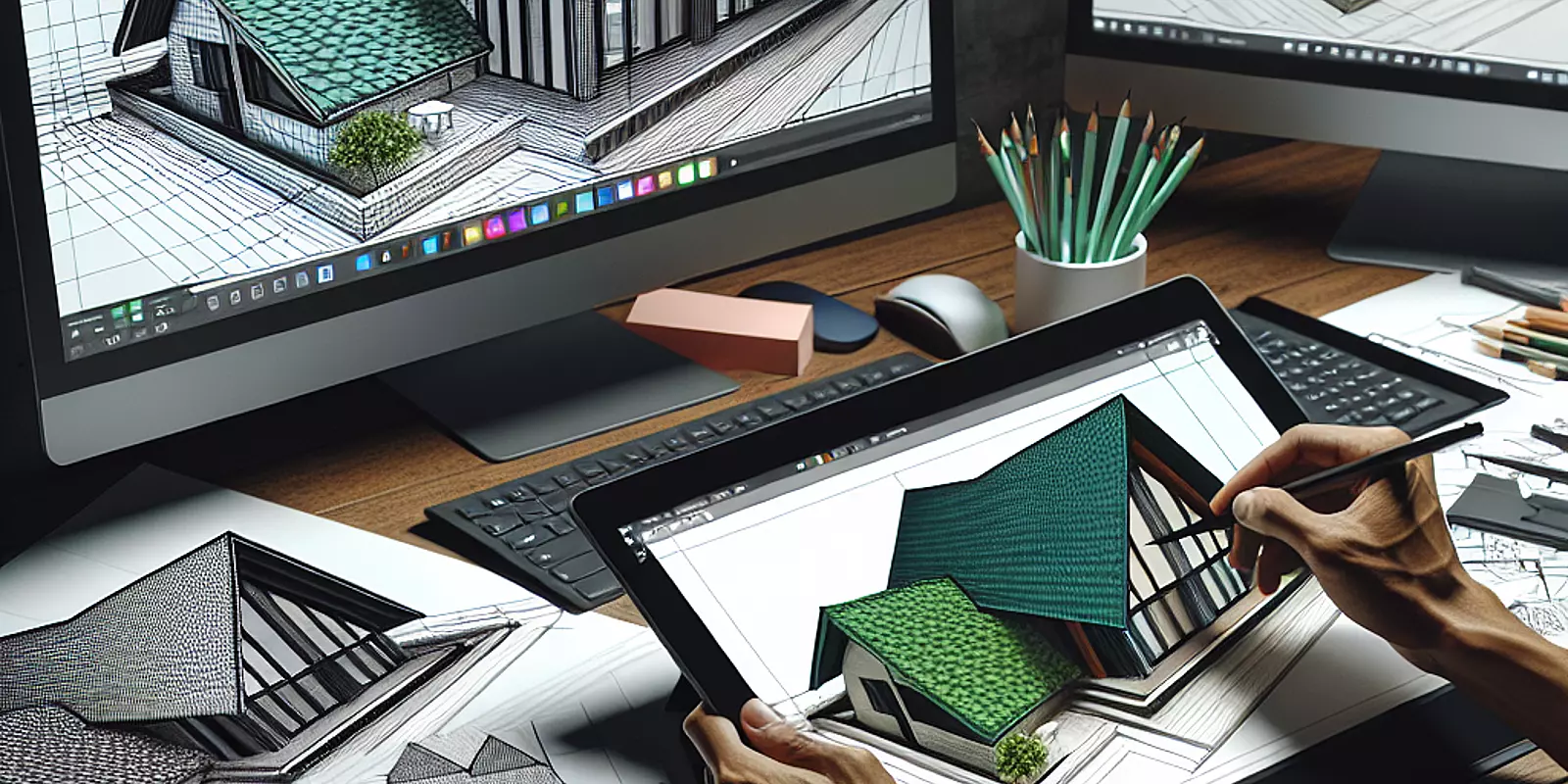
Roof modeling is a cornerstone in the field of architectural visualization, shaping a building's outline while enhancing both its functionality and aesthetic appeal. This guide serves newcomers by outlining the intricacies of roof design, highlighting various styles, and the best practices to master this essential skill.
Roof styles significantly affect a structure’s overall design, from aesthetics to energy efficiency. Here we discuss the most common types and the challenges they present:
Gabled roofs, notable for their triangular form, are visually striking yet pose challenges with their steep pitches and variable overhangs. These aspects demand precise attention to detail, particularly for beginners in roof modeling.
Hipped roofs feature slopes on all sides, offering complexity in structure and drainage. Accurate calculations for water runoff are essential to avoid potential drainage issues.
Flat roofs may seem straightforward, but they require diligent modeling to ensure effective drainage. Designs like shed and butterfly roofs feature unique angles that challenge your geometric skills, especially in tools like Autodesk Revit and SketchUp. Visual aids can simplify the understanding of these complex structures.
Real-world Example: Consider the frequent use of flat roofs in modern office structures, where precise design ensures enduring functionality.
Choosing the right software for architectural visualization is crucial, impacting both design efficiency and quality. Here's an overview of two popular software options:
Famous for roof modeling in Revit, this software excels in Building Information Modeling (BIM), offering highly detailed capabilities for intricate roof designs. However, its robust features come with a considerable learning curve.
Known for its ease of use, SketchUp enables quick prototyping and simple sketches, making it ideal for novices. While it lacks some of Revit’s advanced features, extensions and plugins can supplement its functionality for more complex structures.
Visual Tools: Integrating visual aids like screenshots can make complex concepts around “parametric modeling” more relatable and easier to grasp.
Achieving a high level of proficiency in roof modeling involves the application of specific techniques:
Utilizing parametric modeling in Revit allows for dynamic adjustments of roof structures, providing flexibility during the design process.
Merging 3D modeling with 2D layouts can clarify complex geometries and improve the visualization of spatial relationships, which is central to 3D roof modeling.
Incorporating textures and materials early in the process can enhance the realism of your models and affect visual impact analysis positively.
Proven Approaches: Learning from experienced modelers can prevent common mistakes and broaden your skillset.
Improving your skills in roof modeling requires continuous learning and engagement with various resources:
Platforms like YouTube offer a wealth of tutorials for all skill levels. Channels dedicated to roof modeling cover essential geometry and rendering techniques.
Engaging with online forums aids in idea exchange and troubleshooting, fostering community-based learning.
Blogs and websites like ‘ArchDaily’ provide insight into innovative designs and trends, inspiring project creativity and innovation.
Real-world Application: Stories from other learners showcase how these resources can be leveraged effectively in real projects.
Mastering roof modeling not only ensures aesthetic success but also structural integrity. By exploring different roof types, leveraging the right software, and employing effective techniques, you can tackle both simple and complex architectural projects.
Emerging trends like AI and virtual reality are poised to transform the field. AI offers predictive capabilities to enhance structural performance, while virtual reality provides clients with immersive experiences that elevate presentations.
Staying abreast of these developments allows architects and designers to create not just functional spaces, but visionary ones—pushing the boundaries of architectural visualization. By continuously refining your skills and embracing new technologies, you solidify your role in the ever-evolving landscape of architectural design.